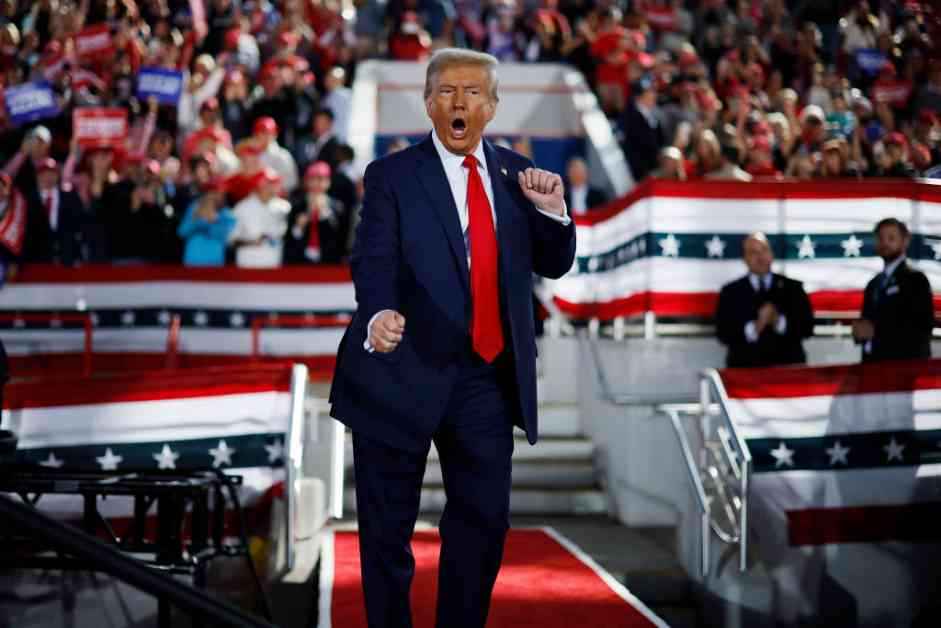The recent shift in the US government’s stance on Diversity, Equity, and Inclusion (DEI) has sparked a significant debate within the art world. The implications of this shift on the global art market and institutional programming are under scrutiny, with art writers and critics weighing in on the potential consequences. Questions arise as to whether the commercial art world will align with the government’s new direction, or if it will maintain its own course.
The Impact of Anti-DEI Policy on the Art World
Critically acclaimed art critics and writers, such as Scott Reyburn and Jerry Saltz, are delving into the implications of the Trump administration’s anti-DEI policies on the art world. Reyburn poses a thought-provoking question in The Art Newspaper, wondering if the wealthiest individuals’ shift to the right will influence the commercial art world. This prompts a deeper dive into how exhibitions that focus on “identity art” are perceived, with varying opinions on whether they are essential or divisive.
In a recent review of Christine Sun Kim’s exhibition at the Whitney, Saltz challenges the notion of “identity art” and how it intersects with the artist’s personal experiences. He highlights the complexities of art as a form of identity expression, emphasizing that all art is inherently tied to the artist’s unique experiences and perspectives. The debate on the importance of recognizing diverse voices within the art world continues to evolve, with some advocating for greater representation of marginalized artists.
The Cleveland Museum of Art’s decision to return a stolen Roman bronze statue to Turkey sheds light on the ethical considerations within the art world. The museum’s reversal comes after new evidence presented by the Manhattan district attorney’s Antiquities Trafficking Unit confirmed the statue’s origins as looted from an archaeological site in Turkey. This case underscores the importance of provenance and ethical sourcing in the art market, as institutions grapple with the implications of acquiring potentially stolen artifacts.
The Aftermath and Ongoing Discussions
The repercussions of sudden decisions and controversial actions within the art world continue to reverberate, as seen in the fallout from dropping artist Khaled Sabsabi from Australia’s Venice Biennale pavilion. Former director Elizabeth Ann Macgregor expresses the deep-seated concerns surrounding the tainted reputation of the pavilion, highlighting the challenges faced by artists in navigating ethical dilemmas within the art world.
In France, a prosecutor’s request for suspended prison sentences and fines against businesses and executives involved in the restoration of the Château de Versailles royal opera sheds light on the labor abuses that persist within the art industry. The case underscores the need for greater protection of artisans and workers involved in art restoration projects, emphasizing the importance of upholding ethical standards and ensuring the well-being of all individuals within the art ecosystem.
As artists and institutions navigate complex ethical and social issues, collaborations and artistic endeavors continue to evolve. The rekindling of a partnership between artist Tom Sachs and Nike following allegations of toxic abuse highlights the nuanced relationships within the art and fashion industries. Meanwhile, architect and designer India Mahdavi’s innovative museum project in Norway showcases a blend of maximalist design and thematic exploration, inviting viewers to engage with art in a new and vibrant setting.
The art world’s resilience and creativity are on full display in the wake of recent challenges, such as the devastating wildfires in Southern California. Artists like Alec Egan, who lost everything in the fires, find solace and inspiration in their work, using the gallery space as a makeshift studio to create meaningful pieces. Exhibitions like “Fire Kinship: Southern California Native Ecology and Art” at UCLA’s Fowler Museum offer a poignant reflection on the region’s relationship with fire, emphasizing the role of Indigenous tribes in stewarding the land and revitalizing traditional practices.
In conclusion, the ever-evolving landscape of the art world reflects a complex tapestry of social, political, and ethical considerations. As artists, institutions, and critics grapple with the challenges of our time, the power of art to inspire, provoke, and unite remains a potent force for change. Through ongoing dialogue and collaboration, the art world continues to push boundaries, challenge conventions, and shape our collective understanding of the world around us.












